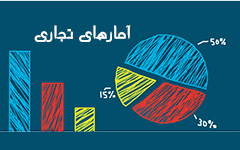History
Mashhad is a city in northeastern Iran and the capital of Khorasan Razavi province. With a population of 2,957,751 million, it is the second most populous city in Iran after Tehran. The presence of the shrine of Imam Reza, the eighth Imam of the Shiite religion, in this city attracts more than 13 million pilgrims to Mashhad annually. Due to its suitable natural conditions, the Kashfarud River basin, in which the city of Mashhad is located, was considered as one of the most important pre-Islamic areas to live in Khorasan. The area was originally home to non-Aryan tribes. Near the current city of Mashhad, there was a city called Toos. In Iranian mythology, the main building of Toos city is attributed to Jamshid and its reconstruction is attributed to Toos, Pahlavan and Sepahsalar Irani. Toos was completely conquered by the Arabs during the Ottoman Caliphate. During the Islamic period, the region was part of the province of Tus, the capital of the city of Tabaran, which included the villages of Sanabad and Noghan, which are now part of Mashhad.
During the reign of Harun Abbasi, Hamid ibn Qahtaba Ta’i was the governor of Khorasan, who had a palace in a garden located 1.5 km from Sanabad. In the spring of 193 AH, Aaron, who was on his way to Samarkand to quell a revolt, fell ill in Noghan and was buried in that garden, according to his will. A few years later, during Mamun’s caliphate, in 202 AH, Imam Reza, who was on his way to Baghdad after a year in Merv, was poisoned at Amir Sanabad’s house, and Mamun buried his body near Harun’s grave. From then on, that point was called “Mashhad al-Reza” meaning “the place of Reza’s martyrdom” and was abbreviated to Mashhad. After the Mongol invasion, the people of the ruined city of Tus migrated to Mashhad and the city developed. Mashhad was chosen as the capital of Iran during the reign of Nader Shah Afshar.
Geography and climate
The city of Mashhad, the capital of Khorasan Razavi province, with an area of 204 square kilometers, is located in northeastern Iran, with a longitude of 59 degrees and 15 minutes to 60 degrees and 36 minutes and a latitude of 35 degrees and 43 minutes to 37 degrees and 8 minutes. The river is located between the Binalood Mountains and the Thousand Mosques. The altitude of the city is 985 meters above sea level and its distance from Tehran is 966 kilometers.
Due to its special geographical location in the border region between north and south of Khorasan and also the interference of different climatic fronts, Mashhad has a climate and special climatic characteristics and most of the Mashhad-Neishabour plain, cold and dry climate and part of Mashhad plain – Quchan, semi-dry and cold and a small part of the highest heights of Binalood mountains and Hezar Masjid is part of the cold humid climate. It has hot and dry summers and cold and humid winters. The highest temperature in summer is 35 degrees above zero and the lowest in winter is 15 degrees below zero and the amount of variable rainfall and the average annual rainfall in Mashhad is about 253 mm. Its important river is the Kashfar River, whose important tributaries are Radkan, Torqabeh, Jagharq, Dehbar, Zashk, Golestan and Dolatabad. The groundwater supply sources of Mashhad plain include springs, aqueducts, deep wells and semi-deep wells.
population
The city of Mashhad has had a high population growth in the last century. In the first official census of Iran in 1335, this city, with a population of 241,989, was the fourth most populous city in Iran after the cities of Tehran, Tabriz and Isfahan. In the next census and in 1345, this city was ranked third among the cities of Iran after Tehran and Isfahan. In the 1976 census, Mashhad was the second most populous city in Iran after Tehran, and in the 2006 census, it had the same position. According to the 2006 general population and housing census, the population of Mashhad this year was 2,410,800, and in the last census conducted in 2011, the population of this city reached 2,766,258.
Tourism
Due to the existence of the shrine of Imam Reza (AS), the big and beautiful city is famous and attracts countless tourists every year. This pilgrimage city hosts domestic and foreign tourists almost every day of the year. However, in addition to pilgrimage, it also has several places for tourism in and around the city, and the history of most of the historical monuments in this city dates back to the 8th century AH.
The historical monuments of Mashhad include Ferdowsi Tomb, Naderi Tomb Museum, Pirpalanduz Tomb, Mosalla Torgh, Bazeh Hor, Mil Akhangan Mosque, Haftad Do Do Ton Mosque, Imamzadeh Seyed Mohammad (Brick Dome) and Haruniyeh Dome and Page Historical Village. Commercial and recreational complexes include East Diamond, Proma, Village Tourist, Reza Bazaar, Padideh Shandiz and Bio Khavar. There are many places of interest in Mashhad, such as Mellat Park, Kuhsangi Park, Vakilabad Forest Park, Khorshid Park, Torqabeh, Zashk, Naghndar, Shandiz, Jagharq, Ganak village, Akhlamd waterfall, Moghan cave and Haft Houz. .
cultural
In the city of Mashhad, due to the existence of the holy shrine of Samen Al-Hajj (AS), there have been various cultural facilities around the holy shrine from the distant past and it has been the center of religious and scientific activities, so that now Mashhad is due to the facilities Various cultural centers such as seminaries, various academic, research and research centers and various pre-university education centers, religious, scientific, literary, artistic associations, lectures and the existence of various publications and newspapers are one of the important centers of cultural activities. The country is considered. Due to its cultural importance, this city is considered as one of the important religious and scientific hubs and various seminars and conferences are always held in this city.
In addition to basic and important religious and scientific activities, the existence of seasonal and permanent exhibitions of books published in this city is one of the important factors in the cultural promotion of neighbors and pilgrims. In the city of Mashhad, in addition to religious schools,






 - 2019 ©
- 2019 ©